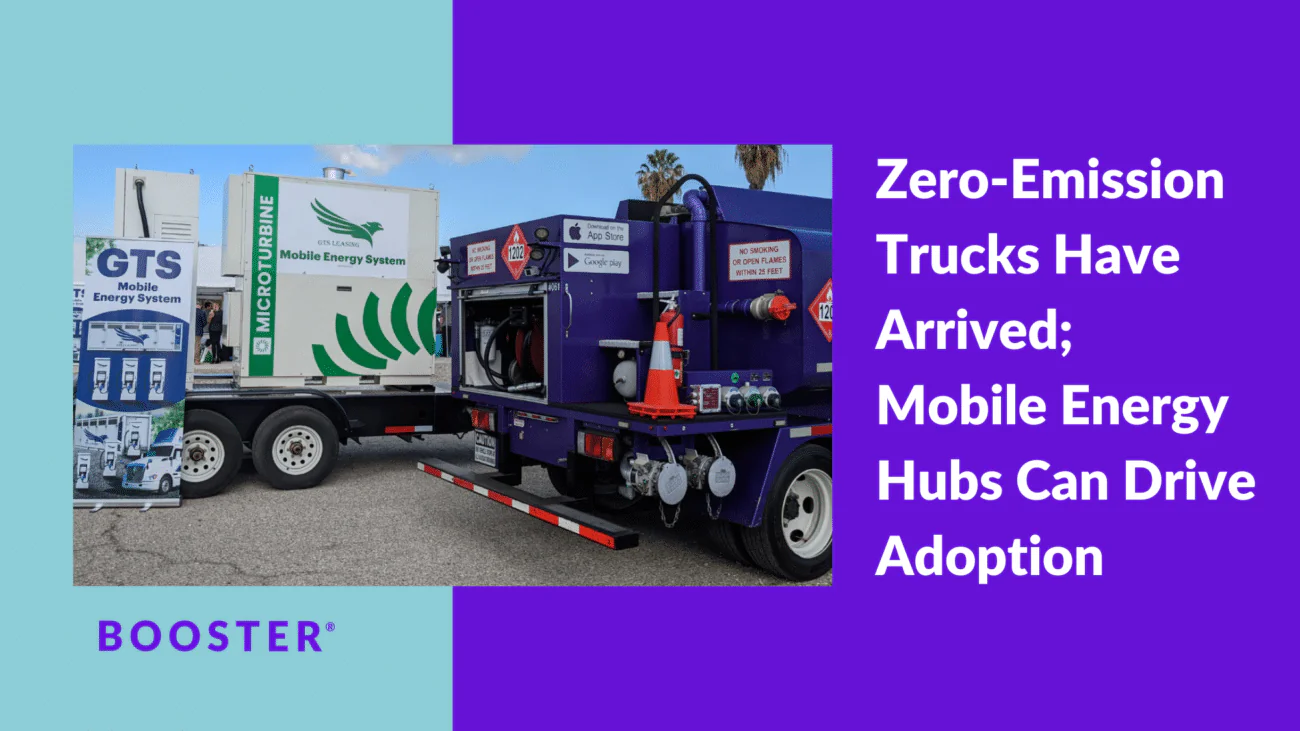As of 2020, the EPA reported that nearly one-third of all United States emissions are attributed to the transportation sector, and of that portion, more than a quarter are emitted by medium-and heavy-duty vehicles. The enormity of those numbers is not lost on the industry, and yet, medium- and heavy-duty vehicles have been slower to decarbonize as passenger EVs hit the roads with unprecedented speed.
The lag is not due to a lack of desire, but rather the challenge of decarbonizing larger vehicles with higher payloads. Historically, it has been difficult to electrify medium- and heavy-duty vehicles in a way that adequately balances battery size and weight with the efficiency needed to haul large quantities of heavy goods, often over an extended route.
Across the trucking industry, OEMs are bringing decarbonized solutions to the heavy- and medium-duty vehicles markets. Electric semi-trucks and forklifts are on the horizon, along with a range of sustainable zero-emission trucks (ZETs), all with potential to alleviate the long-time headache of hard-to-abate heavy duty fleet decarbonization.
As these fleets take on unique combinations of EVs, hydrogen fuel cell EVs, sustainable fuels and more, they will begin to deploy a fluctuating ratio of energy solutions within their fleets. As they do so, they will need dedicated energy partners offering flexible energy delivery services to meet the personalized needs of each mixed-energy fleet. With an eye on sustainably powering the movement of people and things, Booster is getting involved, collaborating with OEMs, and preparing to support the emergence of zero-emission trucking.
Zero-Emissions Vehicles Hit the Streets
At a December 6 event at the Port of Long Beach in Long Beach, California, Booster® joined more than 15 OEMs and organizations including Nikola, Hyundai, Peterbilt, CalStart and Voltera at the Zero-Emission Ride and Drive Event. Attendees learned about the benefits of zero-emission trucks, buses and heavy equipment, as well as EV charging, hydrogen fuel, ZEV infrastructure parking and mobile ZEV repair, and had the opportunity to ride, drive and preview class-8 battery and fuel cell electric trucks.
In coming years, zero-emissions heavy vehicles will proliferate into the mainstream, helping to battle the ongoing climate crisis through decarbonization. But despite the advancements made in the vehicles themselves, challenges to grid capacity, charging efficiency, supply chain networks for sustainable fuels and more complicate the ability of trucking companies to successfully deploy zero-emission vehicles.
Developing adequate supporting energy infrastructure and frameworks will be just as crucial to longevity and success in decarbonized transportation as the vehicles themselves. While electrification and alternative fuels are hero technologies for increasing the sustainability of transportation, they require distributed, robust charging and fueling networks — especially in heavy-duty trucking, where drivers often travel long distances across remote, rural stretches of the country where energy grid infrastructure and funding tend to be weakest.
Even if the concrete decision was made to remedy this situation with fixed energy infrastructure, ensuing adequate power generation and funding poses potential hurdles. According to a recent report from the American Transportation Research Institute, electrifying long-haul truck runs alone would command nearly 10% of the nation’s power generation, and installing charging equipment at truck parking stops across the U.S. could cost more than $35 billion.
On the Horizon: Mobile Energy Hubs
Recognizing the complex issue at hand, Booster is working closely with OEMs to understand their unique needs so that we can support the trucking industry across its decarbonization journey. There are clear points of feedback about what the heavy- and medium- duty vehicles industries need to transition to zero-emissions, and we are using this knowledge to evaluate the various solutions that will be required to help buyers launch their ZET fleets successfully.
As fleets of all sizes and vehicle types embrace decarbonization, their iterative energy transitions will lead to the growing presence of mixed energy fleets, which deploy various fuel and power sources to meet unique emissions goals, operational requirements and business objectives. This movement will require flexible, personalized energy systems that can adapt to each fleet’s specific needs, servicing a wide range of ZEV types.
Today, Booster is incubating mobile electric charging capabilities, which could provide reliable charging for ZEVs and reduce reliance on fickle grid infrastructure in the future. Over the long-term, these mobile charging stations could be integrated into fleet energy hubs across the nation, which would support fueling and charging for various vehicle types and energy sources. For example, these hubs could generate local charging power through fuel cells or biodiesel generators, while providing insights into the real-time flow of energy, operational data and fleet emissions.
While medium- and heavy-duty vehicle manufacturers continue to develop decarbonization solutions that battle the ongoing climate crisis, Booster is collaborating with the industry’s greatest minds, focusing on how we can grow our own capabilities and services to support the rapidly evolving zero-emissions trucking landscape. As always, our mission remains to provide the right energy, in the right place, at the right time, zero-emissions trucking included.
